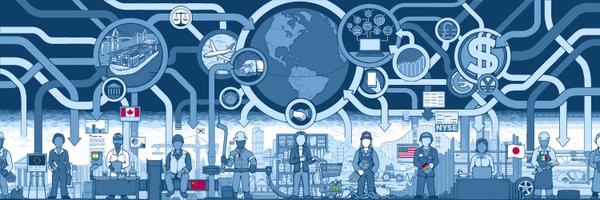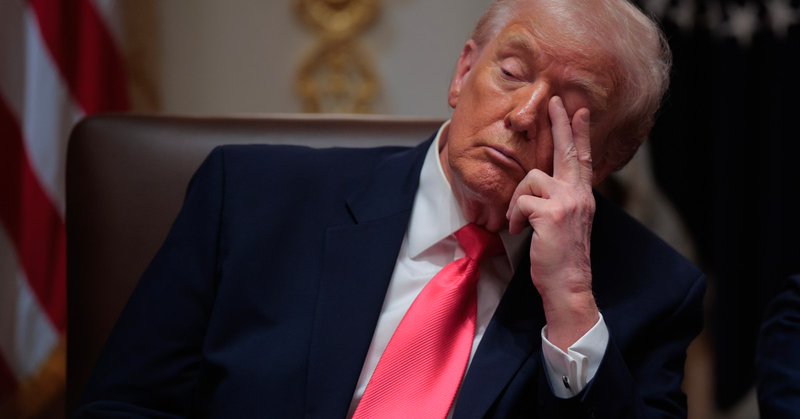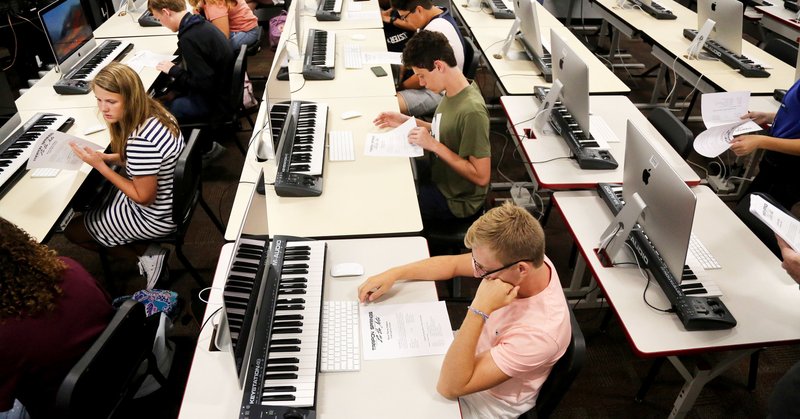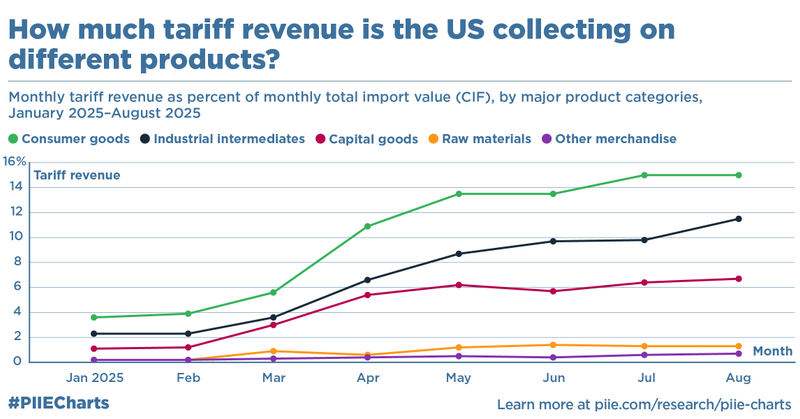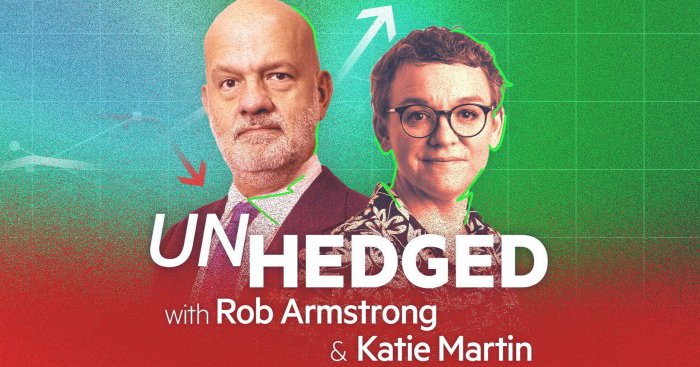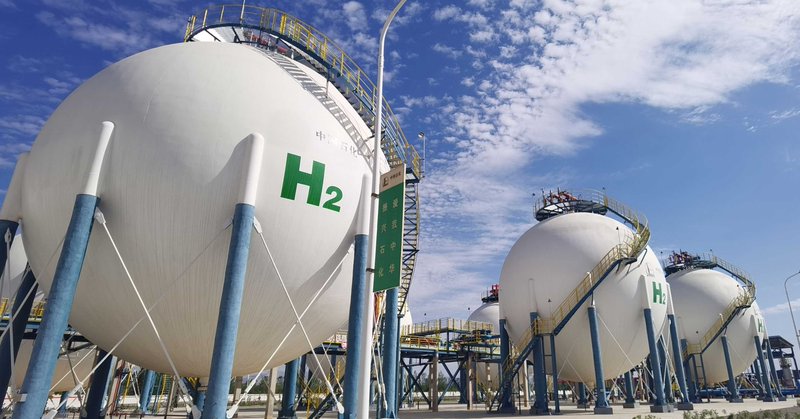
Peterson Institute
@PIIE
Followers
107K
Following
9K
Media
10K
Statuses
47K
The Peterson Institute for International Economics is a nonpartisan, independent research institution devoted to studying international economic policy.
Washington, DC
Joined March 2009
Join us for an event featuring @elinaribakova, Yuriy Gorodnichenko, & Maurice Obstfeld discussing this & more on December 11: https://t.co/1jLGegrBKv
0
1
1
Ukraine’s resilience stems first & foremost from its macroeconomic stability & ingenuity. For Europe, what this shows is that defense does not require overspending. How to spend is as important as how much, @elinaribakova writes. https://t.co/XwAz5LhXyF
ft.com
By maintaining stability and innovating to hold out against Russia, Kyiv has shown that size matters less in conflict than it used to
1
0
2
“If you pushed tariffs to their revenue-maximizing limit—which would be very unwise for a host of considerations—they would bring in less than $400 billion a year, a small fraction (about one sixth) of what the income tax raises,” @KClausing says.
newsweek.com
Economists are bemused by the idea that customs duties could eventually replace the government's primary source of revenue.
0
0
3
As US trade policy starves beginners of today, it starves future demand for premium US instruments—& keeps instruments out of the hands of tomorrow's stars, kids whose musical spark might have been lit by a starter instrument unwrapped this year. More:
piie.com
This holiday season, aspiring musicians may be priced out before they ever unwrap their first instrument—courtesy of US tariff policy. With eight months of trade data to assess, the effects of the...
0
1
4
Nicholas Lardy writes that the view of China’s economy constrained by a weak social safety net & anemic domestic consumption spending is out of date. Data show China has expanded parts of its social safety net & consumption spending has accelerated. https://t.co/lhOOAppv3n
piie.com
Many experts see China’s economy as constrained because of a weak social safety net, especially the retirement system, resulting in anemic domestic consumption spending. This view is out of date....
0
0
2
The US Trade Representative is due to send a report to Congress on the US-Mexico-Canada Agreement (#USMCA) in January, ahead of the July 2026 review of the agreement. Learn everything you need to know from our guide to the USMCA here: https://t.co/8Bq7qM3GLd
0
0
1
The lesson is clear, @elinaribakova writes in @FT. Together, European financing & Ukrainian ingenuity can build an effective deterrent against external threats, even as the US pulls back.
ft.com
By maintaining stability and innovating to hold out against Russia, Kyiv has shown that size matters less in conflict than it used to
0
0
1
Trump’s tariffs are raising government revenues, but how much is the US Treasury actually collecting from US importers? And what products and countries are hit? This monthly tracker measures tariff revenues in practice over time. 👇 https://t.co/dGSSuC3K9u
piie.com
President Donald Trump’s tariffs are raising government revenues, but how much is the US Treasury actually collecting from US importers after the starts, stops, delays, exclusions, and other factors?...
0
1
4
Ukraine, Europe and the new economics of war via @FT
ft.com
By maintaining stability and innovating to hold out against Russia, Kyiv has shown that size matters less in conflict than it used to
3
8
39
David Fishman (@pretentiouswhat) joined Policy for the Planet to discuss how China has used renewables & low-carbon energy to bolster its grid & what the US & other countries can learn from its expansion. Listen wherever you get podcasts.
0
0
0
"I believe inflation is gonna be significantly higher than the current forecast by a year from now, by probably by third quarter of 2026" from "tariffs plus other factors," @AdamPosen says. Listen to @FT Unhedged podcast here or wherever you get podcasts:
ft.com
Katie Martin and Robert Armstrong talk to Adam Posen
0
2
3
DECEMBER 11: @jfkirkegaard moderates presentation & discussion with @elinaribakova, Yuriy Gorodnichenko, & Maurice Obstfeld on rebuilding a postwar, westward-facing Ukraine & how wartime mobilization has shaped Russia's economy. Info & register: https://t.co/1jLGegr3UX
0
2
2
Stir up the group chat with a "let’s go to Florida this weekend 😎”
1
4
66
As US trade policy starves beginners of today, it starves future demand for premium US instruments—& keeps instruments out of the hands of tomorrow's stars, kids whose musical spark might have been lit by a starter instrument unwrapped this year. More: https://t.co/IKlTsGvrIe
2
4
15
.@KClausing testified to @WaysMeansCmte/@WaysandMeansGOP that the most direct way to promote global competitiveness for American businesses & workers is to remove the Trump Administration tariffs. Read the testimony here:
piie.com
Chairman Kelly, Ranking Member Thompson, Members of the Committee: Thank you for inviting me to share my views on US global competitiveness. In my testimony today, I will make four key points that...
0
0
1
ICYMI: @ChorzempaMartin joined PIIE Insider LIVE to explain how US export controls on semiconductors work, what the difference between open & closed AI models in the US & China mean, & more. Listen wherever you get podcasts or watch here: https://t.co/khKetWB9oS
0
1
5
Data indicate China has expanded many parts of its social safety net & consumption spending has accelerated. But given China’s aging population, safety net spending & domestic consumption spending must expand further for more sustainable economic path. https://t.co/lhOOAppv3n
piie.com
Many experts see China’s economy as constrained because of a weak social safety net, especially the retirement system, resulting in anemic domestic consumption spending. This view is out of date....
0
0
2
China has made strides in meeting energy needs by expanding its electrical grid & tapping new sources, including hydropower, nuclear, & wind & solar, as well as green hydrogen. Read more here & listen to Policy for the Planet wherever you get podcasts. https://t.co/RVpcHZoBO3
piie.com
China's ambitions to influence the world economy will fail if it cannot meet its outsized need for energy, especially electricity, to power its innovations in artificial intelligence. But in an...
0
0
2
Data indicate China has expanded many parts of its social safety net & consumption spending has accelerated. But given China’s aging population, safety net spending & domestic consumption spending must expand further for more sustainable economic path. https://t.co/lhOOAppv3n
piie.com
Many experts see China’s economy as constrained because of a weak social safety net, especially the retirement system, resulting in anemic domestic consumption spending. This view is out of date....
0
0
3
